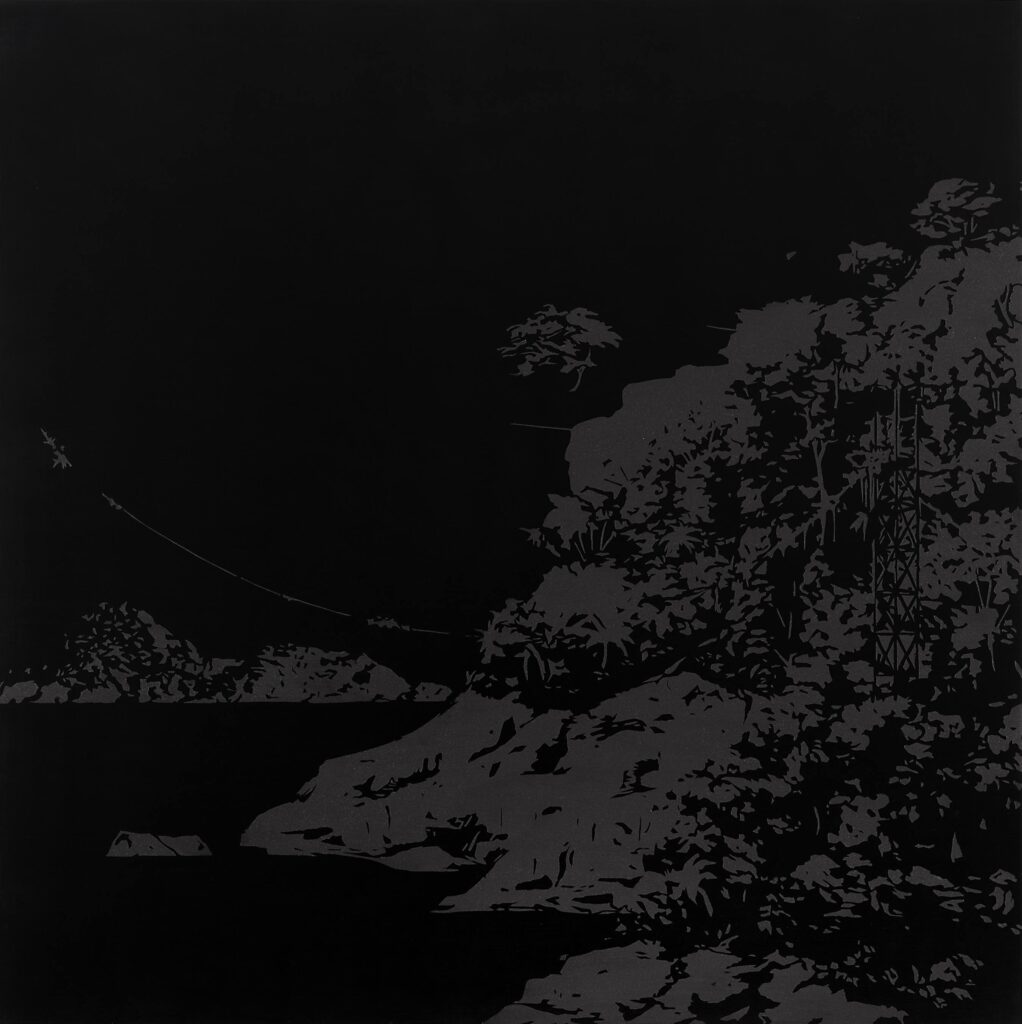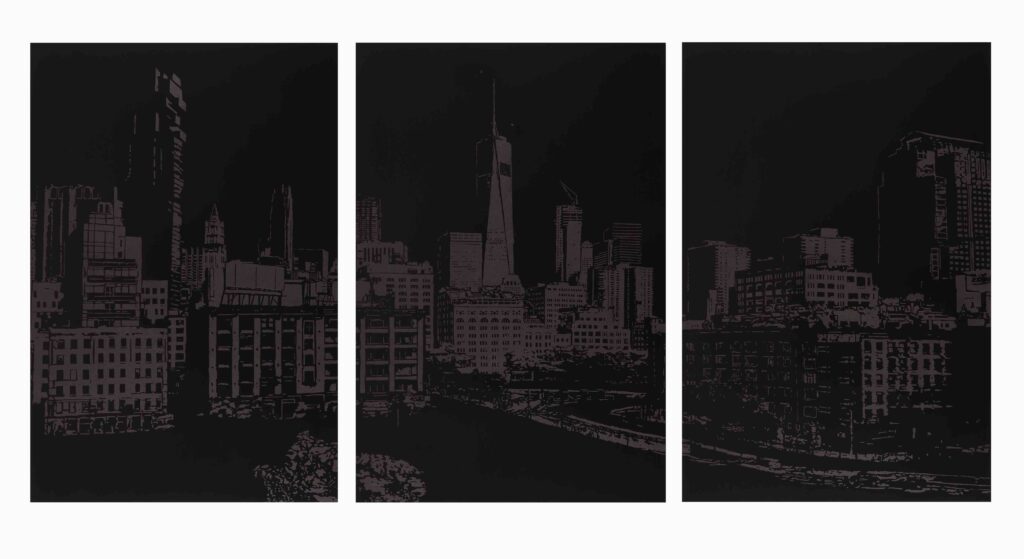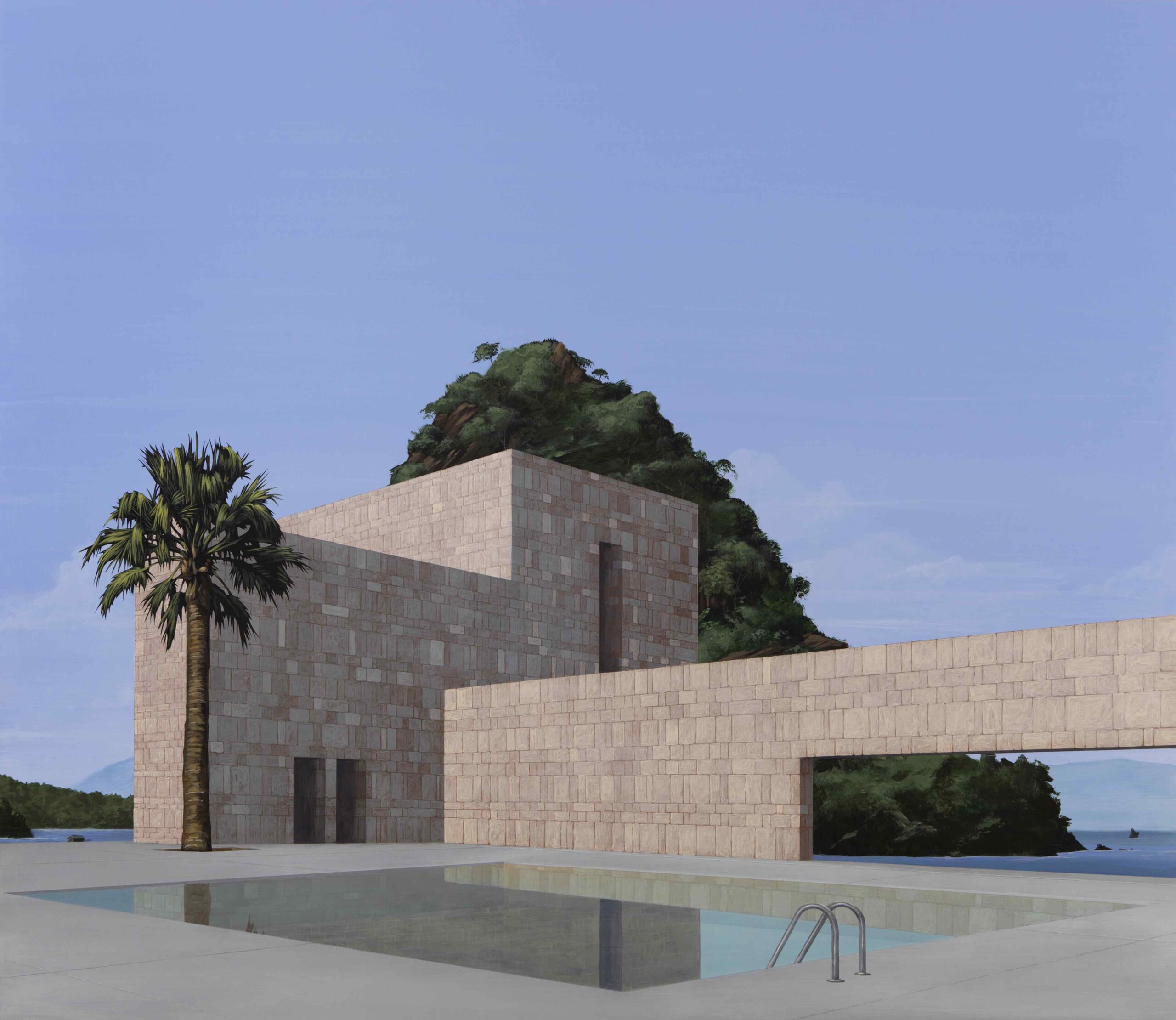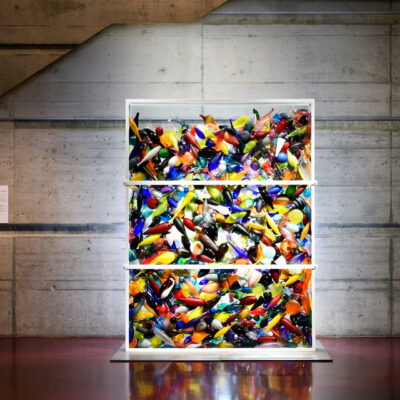On the opening of his solo show at Xippas Gallery, Paris, Art Vista does a flashback to our interview with Dean Monogenis at the Xippas Gallery stand at Artgenève, 2019, in which he talked about creating his own reality, and adding light to a dark world.
Dean Monogenis was born in New York in 1973. He studied at the Art Institute of Chicago, and lives and works in Brooklyn, New York. His work has been exhibited at the Bronx Museum of the Arts, the Musee d’art moderne et contemporain of Saint-Etienne, and Mcnay Art Museum in Texas among other institutions. He is represented by Xippas Gallery in Paris and Geneva.

Kristen Knupp for Art Vista Magazine: Your paintings look very realistic, with exquisite detail in the landscapes and brickwork, for example. But when one looks more closely, the details do not seem to add up, logically, to an existing building or setting. For example, in the meticulously-painted Swimming Hall, the water level seems to rise as it gets further away from the viewer. What is really happening in these seemingly realistic landscapes and interiors?
Dean Monogenis: This painting is based on a Berlin swimming pool and it has a 3D element to it. I find swimming pools to be contemplative spaces. It is an intentional optimal illusion at the bottom of the pool and the floor around it. This painting is all drawn out carefully and then manipulated a little bit, so I move something over or it changes. To get the lines really precise I use tape, and in some areas I use a type of clear film that I cut to make a stencil. My work tends to employ different techniques to get the right effect.
I’ve also been interested in the last few years with reflections, I used to paint water without reflections, but I have wanted to paint it, so I am doing it in the most deliberate way, using the basic optics of reflection. This painting is based on a photograph but that reflection wasn’t very good so I had to invent how it should be. I have created how that would look, so I played a game with the optics. This painting has a lot of thin layers of glazing with a transparent white in order to make it feel like the water is reflecting natural light, I wanted to give it a strange, bountiful light. This was the way I could achieve it.

DM: This is a series of pieces, all done with a stencil that I draw and cut out. It is based on another painting and then I started to manipulate it as I painted it. It is all cut with a knife and I peel it and then the area gets painted. I used Micaceous Iron oxide (used in manufacturing paint coatings and when viewed under a microscope the particles appear as sharply defined red translucent platelets) so the sparkling part actually has glass in it. It is a very fragile process so I have to paint it in sections. It is like patchwork. Mica gives it the sparkle, and the iron oxide reflects light in different ways.

DM: All these paintings have to do with water and this one is from a place in Costa Rica called Santa Teresa. It is an idyllic, hippy, surf community that I stumbled upon and it captivated my imagination because I hadn’t been to a place like that in a long time. And so of course I put a building in there, out of my imagination. Normally, when I paint houses they are typical, modernist houses with lots of glass but I wanted this one to be a Peter Zumthor-type of structure. It really became about the texture of painting the wall and how to achieve a free-handed effect but still have the stone and the light accurately depicted. I hand-painted each stone and then wiped away the paint to give it that effect.
Scaffolding and power lines really captivate me because there is a human intervention into paradise. There is the notion of romantic photography and vistas and I grew up on that ideal but when you get to the vista you find there is a sign or a road or something else you didn’t expect to see. So I want to comment on that and show the reality of a vista. My paintings give you just enough realism that you could be convinced and then you might notice something and you have to investigate it further. It is a good game to play and there is a mystery there.

DM: This is New York and you are on the 16th floor of the New York Genome Center and I go there every year for a conference. You have a view downtown of Canal Street, and I am fascinated with the history of Canal Street. Canal Street is a dividing street in New York between neighborhoods, it borders Chinatown, and now they are trying to make it something new again. It is also a rare opportunity when you are on the 16th floor in this building in New York to back up from everything and see this unusual downtown view. Historically, there would have been two towers here, and now there is a Jenga building so things change over time. There is constant change in New York.




